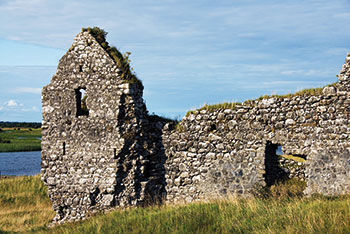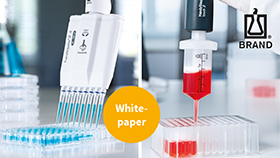Fáilte go hÉirinn
Career strategies for young European scientists
by Ralf Schreck, Labtimes 06/2010
Crisis-shaken Ireland currently has a hard furrow to plough. And it’s not stopping at the scientific sector, either. Perhaps the country can still change course, after all, green is the colour of hope.
The Celtic Tiger is limping. After more than a decade of rapid growth, Ireland has been hit hard by the financial crisis. Within a short period of time, one of the fastest growing economies has accumulated the highest public deficit in Europe. Austerity measures do not spare education and research. Funding bottlenecks and salary cuts have upset the endemic scientist. Spectacular outdoor activities or a refreshing after-work pint at the pub next-door may help to find some distraction. But the research talent from abroad has to think twice before hitting the road. Here, Lab Times reports on the latest developments and introduces some funding opportunities that may spark your interest. Will Ireland make it to your short list?
Background
Ireland is the third-largest island in Europe and divided into the Republic of Ireland and Northern Ireland. The Republic of Ireland with its capital Dublin has about 4.5 million and Northern Ireland with its capital Belfast about 1.8 million citizens. Irish and English are the two main official languages. Since the 12th century, England has been trying to gain full control over the whole island. Ireland became part of the United Kingdom of Great Britain and Ireland by the Act of Union from 1800. The Irish War of Independence around 1920 led to the secession of 26 of Ireland’s 32 counties and the establishment of the Irish Free State. The Republic of Ireland was declared in 1949. The Troubles marked a 30-year violent conflict in Northern Ireland and beyond, in which more than 3,500 people were killed. Various groups and political parties were involved, including the Nationalists, a catholic minority considering itself as Irish, and the Unionists, the protestant majority considering itself as British. The Good Friday Agreement from 1998 ended the conflict; however, sporadic acts of violence still take place.
The Emerald Isle is well known for its lush vegetation, which is the outcome of frequent rainfall and a maritime climate. Therefore, it is not surprising that agriculture and food exports have been the main drivers of Ireland’s economy. During the 19th century the potato became quite popular. Very soon it became the only crop to be grown in sufficient quantities to feed the majority of farmers dependent on the tenant system. Ireland’s population reached its all-time high with more than eight million inhabitants shortly before the Great Famine started in 1845. Crop failures caused by a disease called potato blight were made responsible for more than one million deaths and for the emigration of hundreds of thousands to England, Canada, the United States, Australia and other destinations. Population numbers further dropped up until 1961. Today, Ireland, with over a third of citizens under the age of 25 years, has the highest birth rate and fastest growing population in Europe. The Republic of Ireland will be covered and referred to as Ireland in this article, as the UK has already been extensively discussed in two previous Lab Times articles.
Performance
The Republic of Ireland still belongs to the top ten wealthiest countries with respect to the gross domestic product per capita. As mentioned, agriculture has long been the major economic driving force but began to lose importance in the early nineties. Since 1995, Ireland’s economy has experienced a boom, which came to a sudden stop with the global downturn in 2007. The term Celtic Tiger was coined in reference to Asian countries with a similar period of rapid economic expansion. One cause for Ireland’s economic upsurge was the heavy investment by large multinational companies manufacturing drugs, chemicals, computers, software and other products. Foreign capital was attracted by the lowest corporate tax rate in Europe, by an infrastructure substantially improved with money from the European Union and by additional subsidies from the Government.
The Irish Government took the next step in its commitment to education, research and technology about a decade ago. Substantial financial resources were provided for prioritised areas and a system of councils, boards and agencies was established with the goal of speeding up the transformation of Ireland into a knowledge-based and innovation-led economy. According to the national policy advisory board, Forfás, the Irish Government spent about €2.53 billion on science and technology last year, which is more than twice the amount in 1999. About half of the governmental expenses were on education and training. Research and development (R&D) accounted for €940 million. Together with €1.7 billion from the business sector and other sources, 1.43% of the gross domestic product in Ireland was spent on R&D. Although a substantial investment, this is still below the European average and far from the three per cent target of the Lisbon Strategy.
One may ask whether Ireland’s economic skyrocketing also had a positive influence on other sectors? In the last Human Development Index by the United Nations, which takes into account per-capita purchasing power, but also life expectancy and educational measures, Ireland was only bested by Norway, Australia, Iceland and Canada. However, in other more general rankings, the Republic of Ireland had already started to lose some ground due to the financial crisis. For example, it was 21st out of 58 analysed countries in the last IMD World Competitiveness ranking, which is ten places down from the 2006 assessment. With respect to its scientific output, Ireland is doing pretty well. For example, an analysis by Thomson Reuters among the 149 top-performing countries, covering publications of the last decade in all scientific fields, revealed that Ireland is ranked 39th for number of publications and 29th for citations per paper. A more detailed analysis by Sciencewatch uncovered that Ireland’s relative impact is particularly high in materials science, immunology, physics and agricultural sciences. An evaluation, commissioned by governmental agencies in 2009, is often incorrectly cited with the headline “Irish research ranked 8th in the world”. In fine print, one can read that the analysis is solely based on data from 20 selected countries. Irish agencies quite often also cite a study by Lab Times published about three years ago, in which Ireland was only defeated by Switzerland in the category citations per article in immunology.
Pharma & biotech
The report “Health Life Sciences in Ireland - an Enterprise Outlook” stressed that the 350 companies in this sector are important employers as well as taxpayers. With more than 50,000 employees, they account for roughly a third of all Irish exports. The Pharma sector is dominated by large multinational companies. Eight out of the ten world leading companies have at least one Irish manufacturing plant. Seven out of ten blockbuster drugs are produced in Ireland, which makes it the second largest net exporter of drugs worldwide. Several indigenous early start-ups and growth-state enterprises have been established in recent years, whose aim it is to find an open niche on the market. Examples include AGI Therapeutics, which is trying to extend the therapeutic use of already approved drugs to gastrointestinal indications or Circ Pharma, which develops novel formulations and delivery routes of existing drugs for CNS and cardiovascular diseases.
The Biotech sector with about 4,000 employees in 60 biotech companies is again largely in the hands of multinationals including Genzyme, Gilead and Schering Plough. Indigenous companies include Opsona Therapeutics, a spin-off from Trinity College Dublin focussing on novel ways to attenuate immune and inflammatory responses, or Sigmoid Pharma developing novel technologies for oral drug administration. Medical Technologies encompassing diagnostics and devices also have a major impact on Ireland’s exports. Fifteen of the world top 20 companies including Abbott, Medtronic, Boston Scientific and Stryker are represented in Ireland. Sixty out of 140 companies are Irish-owned including Proxy Biomedical, Clearstream Technologies or Brivant Medical Engineering. Functional Food is still a small but steadily growing area. Although not all companies are engaged in research, there seems to be plenty of opportunities in Ireland to do an industrial PhD or get a job at times when the academic career pathways are clogged.
State affairs
The structure of the research system in the Republic of Ireland has been shaped over the last two decades and is still being subjected to change. Earlier this year, the two major providers of research funds were affected by changes announced by the Taoiseach (Prime Minister) Brian Cowen. The Department of Enterprise, Trade and Employment was renamed to Department of Enterprise, Trade and Innovation (DETI), whereas the Department of Education and Science was renamed to the Department of Education and Skills (DES). The two respective ministers had to switch posts and the responsibility for the prestigious Programme for Research in Third Level Institutions (PRTLI) went from DES to DETI. Although this is not yet having an influence on PRTLI, it may be taken as further evidence that the Irish Government is putting more and more emphasis on applied and commercial exploitable research.
A jungle of task forces, agencies, councils, foundations and boards has been launched over the years. They take care of policy advice, strategy development and implementation, evaluation and research funding. For example, Technology Ireland, the Higher Research Group or the Health Research Group implement and coordinate national strategies in their respective areas. Since the Irish seem to be fond of consultations, evaluations, perennial strategies and programmes as well as report writing, you might get a good impression of what is going on in Ireland by having a closer look at the following brochures: the National Development Plan 2007-2013, the Strategy for Science Technology and Innovation 2006-2013, the recovery plan “Building Ireland’s Smart Economy: A Framework for Sustainable Economic Renewal” from 2008, or Ireland’s International Education Strategy 2010-2015. But all planning and ambitious goals are not worth the paper they are written on, if there is not enough cash in the end to put them into practice.
The Science Foundation Ireland (SFI) is Ireland’s major basic research funding organisation and will be introduced in more detail below. SFI is primarily active in three key areas: biotechnology, information and communications technology, and, since 2008, sustainable energy and energy-efficient technologies. However, outstanding research is also funded in other areas including science, mathematics and engineering, for example, by the SFI Research Frontiers Programme. In addition, SFI is in charge of the internationalisation of the Irish Higher Education sector and supports co-operations between the public and private sectors via Centres for Science, Engineering and Technology (CSET) and via Strategic Research Clusters.
Governmental agencies
The commercial sector is also taken care of by two additional governmental agencies: IDA Ireland and Enterprise Ireland. Whereas the Industrial Development Agency (IDA) is responsible for the attraction of foreign companies and capital, Enterprise Ireland helps indigenous companies to get started and to capture foreign markets. Both agencies oversee a fair amount of capital. Last year, IDA spent €230 million, whereas Enterprise Ireland’s expenditure was about €400 million. Not only companies and start-ups but also scientists working at universities or public research institutions are supported. For example, Enterprise Ireland is in charge of patent and commercialisation funds to protect intellectual property rights and to advance academic research output into new products and companies. In addition, funds are available for industrial PhDs, collaborations with Irish companies as well as for coordination and travel activities within the frame of EU research programmes.
In comparison to other European nations, there are only a few governmental research institutions focussing on agriculture and food production, forest, marine, health, energy or environmental issues. They may provide fellowships, research grants or jobs for you. Teagasc is the largest public organisation and provides education, research and advisory services for agriculture and food companies. It has about 1,500 employees, including 150 research scientists and spent more than €65 million for research in 2008. In cooperation with universities, Teagasc annually provides 50 Walsh Fellowships for MSc and PhD students, which are worth €21,000 a year for a three-year period. It also operates a Postdoc Fellowship Programme providing two-year fellowships with an annual value of €33,000.
The Health Research Board (HRB) is the Irish lead agency for the support and funding of health research. It has a triple function as a funding organisation for health research, as host of health-related national information systems and as research performer. HRB has about 80 employees and an operational annual budget of about €45 million. However, in total it manages a research portfolio of €180 million per year. The HRB Strategic Business Plan 2010-2014 is predicting a shift in resource allocation from basic biomedical to patient-oriented research, which will further strengthen SFI’s position for basic biomedical research. In late 2010, there were no announcements of fellowships or research grants.
Science Foundation Ireland
The Science Foundation Ireland (SFI) just celebrated its 10th anniversary. The story of SFI started with the Technology Foresight Report from 1999. Several key technology areas for Ireland’s future were identified. These areas are to receive generous funding and, in turn, generate opportunities to do world-class research and establish technology-based industries. In response, SFI was set up as the national strategic research foundation and a €650 million fund was installed to cover funding activities during the first years. Nowadays, SFI is headed by the SFI Board, whose members from academia, industry and the public sector are appointed by Batt O’Keeffe, the Minister for Enterprise, Trade and Innovation. Frank Gannon, the former Executive Director of EMBO, has been Director General of SFI since 2007 but is about to leave to become the Director of the Queensland Institute of Medical Research in Brisbane, Australia.
SFI supported about 600 grant holders last year. About two-thirds of them held Irish citizenship. Half of the 1,350 SFI-funded PhD students and about two-thirds of the 850 SFI-funded postdocs were from abroad. In general, you do not apply for a PhD student or postdoctoral fellowship at SFI but ask SFI grant holders if they are hiring new personnel. This year, the SFI budget shrunk to €150 million, which was €45 million less than expected. Since a very large chunk of the budget was already scheduled for ongoing projects, many programmes or awards have either been scaled down or completely put on hold. In particular, more than 300 positions for new PhD students and postdocs were slashed. However, according to Alva O’Cleirigh from SFI, the annual budget is expected to increase soon. In the latest governmental capital plan called Infrastructure Priorities 2010-2016 SFI received priority status, which means a partial exemption from Ireland’s austerity.
SFI funding programmes, generally focussed on the mentioned priority areas, are open to non-Irish nationals working at Irish institutions and target innovative and competitive research. Duration and value of SFI grants often go beyond the typical grants provided in other countries. For example, with an average success rate of 20% the SFI Principal Investigator Programme covers three to five-year projects with up to half a million euros a year. I want to introduce three SFI funding programmes, which might be of interest for the foreign research talent. However, due to budget cuts they have not been awarded this year. The E.T.S. Walton Visitor Award Programme is named after the Irish Nobel laureate in Physics and funds research visits by foreign scientists with a duration between three and twelve months. Awards amount up to €200,000 per year, which may be used for your salary, research and moving expenses. Applications are to be made with your future host and the responsible research office. In the two last calls, 40 out of 78 applications were funded.
The Starting Investigator Research Grant (SIRG) is the right choice, if you want to establish yourself as an independent researcher. You may apply, if your doctorate is between three and eight years old. Your publication list includes, on average, one article per year in a peer-reviewed international journal after your doctorate and you have to be first, last or corresponding author on at least three papers. You are not a faculty member yet and, so far, have received no research award covering more than one year or totalling more than €100,000. You have to find a mentor providing the necessary infrastructure, who will also act as your advisor and co-supervisor of your students. The first application step is an expression of interest to be sent to the research office of your future host institution, which pre-selects the proposals before forwarding them to SFI. The grant covers up to half-a-million for a four-year period. Included is your salary, which may eat up more than half of the grant, the costs for a mandatory postgraduate student and consumables, travel and equipment. The SFI evaluation is a two-step process. After a first round with international experts, a full review is performed only on the best proposals. So far, there has been only one call and out of 109 applications 16 awards were made. Thirteen grantees were non-Irish but most of them were already working at Irish institutions at the time of application.
More funding for PhDs and postdocs
The President of Ireland Young Researcher Award (PIYRA) is the most prestigious award to attract the research talent from abroad and is highly competitive. PIYRA provides up to €650,000 for a five-year period. In early 2010, the programme was “closed temporarily, pending modifications to the programme and its call documents”. This is a nice euphemism for saying sorry we are out of cash at the moment! Watch out for new calls in these programmes, which should be announced again in 2011 or 2012 at the latest, given that the Irish Government is able to provide the necessary money.
Additional governmental-sponsored fellowships for Master and PhD students as well as for postdocs are available from the Irish Research Council for Science, Engineering & Technology (IRCSET). IRCSET was established in 2001 as an independent evaluation and funding organisation, which provides fellowships in computer science, mathematics, chemistry, physics, engineering, molecular biology, macro-/microbiology and earth sciences.
Fellowship holders are referred to as Government of Ireland Scholars. The Department of Education and Skills have allocated €24 million to IRCSET in the running year. The seven per cent budget cut by the Government was largely offset by administrative savings and salary cuts.
The main initiative of IRCSET is EMBARK. The EMBARK Postgraduate Scholarship supports Master students for 12 and PhD students for up to 36 months. The fellowship amounts to €24,000 a year and includes a living allowance of €16,000. The remainder may be used to cover host organisation fees and research-associated expenses, including conference attendance and the purchase of a computer in the first year. If additional fees for non-EU students are charged, IRCSET takes care of them, too. Applicants may be, as yet, unregistered PhD candidates and registered Master students intending to start a PhD project. To apply, you need a supervisor and two additional referees. Applications are done online and are evaluated by at least two assessors. The reports from your supervisor and the referees, academic qualifications, your motivation and self-assessment and the research proposal are scored. There was only one call for 2010 and every fifth applicant was successful with 150 fellowships being granted in total. The next call will be published at the end of 2010.
The IRCSET Postdoctoral Programme has offered two different fellowships in the past: the INSPIRE programme co-funded by the Marie Curie Programme, but which no longer recruits new students and the EMPOWER fellowship, which is still available via one call per year in autumn. To apply for the highly competitive EMPOWER, your PhD degree must have been awarded not more than three years ago. A PhD degree is required before taking up the grant but is no must-have for your application. Fellowships are for 24 months and open to any nationality. In general, you have to demonstrate some mobility by changing lab and institution. The fellowship provides about €40,000 a year before tax and includes a living allowance of €31,275, a contribution to social insurance and €5,000 for travel, conferences and small consumables. In the last application round, 33 out of 339 applicants were successful and two-thirds of the lucky winners were non-Irish nationals. According to Mark Biggar from IRCSET, the application deadline for the next EMPOWER call is 8th December 2010 and about 45 fellowships will be offered. If you want to do a postdoc in a company, you may apply for one of the 75 fellowships under the IRCSET-Enterprise Partnership scheme. IRCSET also provides additional funding opportunities, including international or bi-national programmes such as Ulysses, which allows research visits between Ireland and France.
Academic careers
According to several academic rankings, the Trinity College Dublin (TCD) is Ireland’s leading university, followed by the University College Dublin (UCD) and the University College of Cork (UCC). In the QS 2010 world ranking Trinity College was ranked 52nd, UCD 114th and the University College of Cork 184th. Not too bad, if you consider that TCD was ranked only one place behind the University of Heidelberg and scored off, for example, the University of Washington in Seattle, the University of Amsterdam or the two major Munich universities. In the sub-category Life Sciences and Medicine TCD made it to no. 81, UCC to no. 115 and UCD to no. 134. In the novel Times Higher Education (THE) ranking, TCD was number 14 in Europe and 76th worldwide, whereas UCD was rated to be number 26 in Europe and 94th worldwide. UCC was not among the top 200 universities in the THE ranking.
Overall, the Republic of Ireland has more than 40 Higher Education institutions including seven universities, 14 Institutes of Technology and a couple of private colleges. In the last academic year, 108,000 students were enrolled in the University sector and about 70,000 in the Institute of Technology sector. The establishment of Institutes of Technology, previously referred to as Regional Technical Colleges, set out in the early seventies to meet the highly specific demands of business and industry. As a result of the 2006 Institutes of Technology Act they received greater autonomy. Institutes of Technology allow students to progress from a two-year associate to a Master and even PhD degree. Main areas include engineering, business, science, information and communications technology and humanities.
PhD students at universities are called PhD researchers and are not considered staff members. PhD researchers have to pay course fees of between €3,000 and €6,000 a year, which might be doubled for non-EU PhD students. The academic entry level is the Lecturer. Lecturer contracts are often temporary for one, three or five years. Permanent Lecturers have to pass a 12-month probation and a three-year induction period. A local promotion/tenure committee decides on tenure or extension of the probation period. A Lecturer may be promoted to Senior Lecturer. Appointment to an Associate or Full Professor requires an international publication record as well as academic experience with respect to teaching and administrative issues. It is estimated that about 80% of academic staff hold permanent positions in Ireland.
With an unemployment rate close to 14%, more and more Irish people prefer to outlast the economic crisis at universities and a record in new student entrants was set this year. More-over, the Government recently launched a strategy to increase the number of international students. Right now, the apportion of international students is 12% at universities and less than five per cent at Institutes of Technology. The goal is to raise international student numbers by 12,000 to 38,000 by 2015. Special focus will be on those from outside the European Economic Association (EEA), since they are charged full tuition fees, thereby more or less financing themselves and putting no strain on the institutions’ budget.
Nevertheless, it is hard to imagine how the universities will cope with the high number of new students, since they experienced not only more than a ten per cent reduction in core funding since 2008 but have also accumulated a deficit exceeding €30 million. Staff reductions, overdue promotions and salary cuts between 5 and 15% will certainly have some impact on the quality of the Irish education system.
The Higher Education Authority (HEA) is the statutory planning, advisory and funding body for higher education and research in Ireland. The majority of funds are provided by annual core recurrent grants to universities, Institutes of Technologies and other designated institutions and are dependent largely on student numbers and not on performance. HEA also administers a wide range of additional programmes, including the Strategic Innovation Fund (SIF), worth half-a-billion Euros for the period 2006-2013, and infrastructure programmes, such as the Programme for Research in Third Level Institutions (PRTLI). In the middle of this year, the Taoiseach, Brian Cowen, announced the results of the 5th cycle of PRTLI. Between 2011 and 2016 about €360 million will be invested into infrastructure and research projects. More than half of the total budget is foreseen for biosciences, translational research and biomedical research. So it is definitely worth taking a look at where the money will end up in the forthcoming years. For example, Trinity College Dublin secured more than €80 million from PRTLI and will use the money preferentially for its most ambitious project, the Trinity Biomedical Sciences Flagship Institute. The 30,000 m2 facility is expected to open in 2011 and will be the home to about 1,000 scientists.
Foundations
Do not expect to get a fancy fellowship from an Irish foundation. A 2009 McKinsey Report entitled “Philanthropy in the Republic of Ireland” revealed that the Republic of Ireland has the smallest number of foundations per capita in Europe. In addition, disease-oriented foundations often have a focus on patient support and not on research funding. For example, the Irish Cancer Society uses less than ten per cent of its available funds for research and provided just three postdoctoral fellowships last year. Nevertheless, you may have a closer look at charities listed with the Medical Research Charities Group, an umbrella organisation for about 30 Irish charities (www.mrcg.ie).
The Wellcome Trust, which is headquartered in London, is among the top five foundations in the world. With an endowment of more than €15 billion, more than €800 million were spent in 2009. It is one of the largest supporters of biomedical research in the UK and beyond. Scientists in the Republic of Ireland are also eligible to apply for funding by the Wellcome Trust. Since 2005, about 60 grants worth €19 million have been awarded to scientists from the Republic of Ireland. This October, a new biomedical research partnership was announced between the Wellcome Trust, Science Foundation Ireland and the Health Research Board. SFI and HRB will now cover 50% of the funding for Irish scientists, who are successful in the highly competitive Trust schemes: investigator awards, fellowships and strategic awards.
Outlook
The Republic of Ireland has invested substantial resources into research infrastructure and people over the last 15 years with the ambitious goals of performing world-class research and gaining access to innovation-driven high-technology markets. Early on, it was not using a global approach but focussing on specific areas including biosciences and biomedical research. To deal with the public sector deficit, the Irish Government now has to find ways to save €14.5 billion by 2014. Devastating news on budget cuts for science and education alternating with promises to launch new programmes providing fresh money are quite confusing. University mergers, the introduction of full tuition fees for students or the streamlining of the whole research funding system is heavily debated. Governmental agencies continue to forecast a bright future to prevent chasing off foreign capital or research talents from abroad. But nobody really knows whether the situation will deteriorate further or whether it will take just one or two more years to get back to normal. Nevertheless, there are still plenty of renowned and well-funded scientists and institutions around Ireland that are able to host a foreign research talent for a couple of years.
Internet Resources
Last Changed: 09.06.2012











